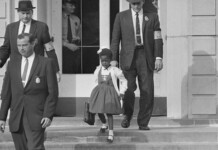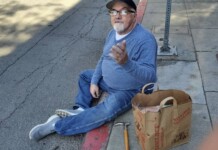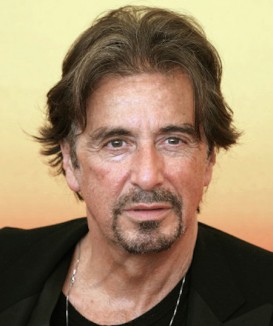70 years ago today, Bell Labs finished the first functional solar cell, allowing for a panel of metal and glass to refract light and heat from the sun into it and generate a current of electricity. The inventors were Calvin Souther Fuller, Daryl Chapin, and Gerald Pearson, and their intention was to power a satellite in space where it could not have its batteries changed. Today, the photovoltaic cell is revolutionizing energy provision for humanity, with a large chunk of scientists and industrialists believing they are a key part of trying to maintain the Earth’s climate as we experience it today. READ more… (1954)

Russian and German scientists both pioneered solar cells at different times, but Bell Labs’ invention was a practical device that took the technology to the real world on board the Vanguard Satellite.
The technology has since expanded to include transparent solar panels, flexible solar panels, bi-facial solar panels, and “quantum dots” which are designed to collect optimal solar energy whilst minimizing physical profile and material costs.
GNN has reported on over a dozen methods and forms of solar cell panel technology, including their deployment above irrigation canals, cemeteries, and cropland, their installment between railway tracks, on top of car chassis and buses, and as a coating for building facades.
MORE Good News on this Day:
- The French national anthem, La Marseillaise, was composed by Rouget de Lisle (1792)
- The first issue of the DC Comics series Batman hit newsstands with its #1 issue that featured the sidekick boy wonder Robin, and Batman’s greatest adversary, the Joker (1940)
- The United Negro College Fund was incorporated (1944)
- 50 nations gathered in San Francisco to begin the United Nations Conference on International Organizations (1945)
- Two Cambridge University scientists published their discovery of the double helix, DNA (deoxyribose nucleic acid), after two months earlier unraveling what they called, “the secret of life” (1953)
- Israel completed its withdrawal from the Sinai peninsula per the Camp David Accords (1982)
- James Richardson was freed from a Florida prison 21 years after his wrongful conviction for murder (1989)
- The final piece of the Obelisk of Axum was returned to Ethiopia from Rome after being looted in 1937 by the invading Italian army (2005)
Today, millions of Italians will take to the streets and their backyard grills to celebrate Liberation Day, which marked the victory of the Partisans over the Italian Fascists and their Nazi puppets during the Italian Civil War. The second most important national holiday (as opposed to a religious holiday) in the country, Liberation Day is a time when families get together to eat (what else?), play sports in the springtime weather, or attend parades.
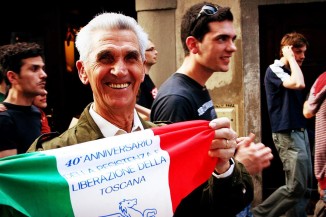
While several other countries, such as Norway and France, had partisan movements, the Italian case has been called unique for its size and intensity, and the only partisan movement to fight in a “civil war” as the historians reckon.
The date was chosen by convention, as it was the day of the year 1945 when the National Liberation Committee of Upper Italy (CLNAI) – whose command was based in Milan and was chaired by Alfredo Pizzoni, Luigi Longo, Emilio Sereni, Sandro Pertini, and Leo Valiani, proclaimed a general insurrection in all the territories still occupied by the Nazi-fascists, indicating to all the partisan forces active in Northern Italy that were part of the Volunteer Corps of Freedom to attack the fascist and German garrisons by imposing the surrender.
“Surrender or die” became the chant, and Mussolini was captured and executed three days later. (1946)
65 years ago today, the St. Lawrence Seaway officially opened for shipping. An enormous maritime trade route, the seaway connects the Great Lakes of North America, and all the important cities on their coasts, to the Atlantic Ocean via the St. Lawrence River in Quebec. Great Lakes and seaway shipping generates $3.4 billion in business revenue annually in the United States. In 2002, ships moved 222 million metric tons of cargo through the seaway. Overseas shipments, mostly of inbound steel and outbound grain, accounted for 15.4 million metric tons. READ more… (1959)
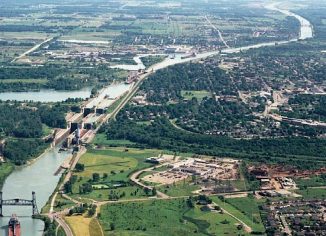
The first proposals for a deep waterway along the St. Lawrence were made in the 1890s. U.S. proposals for development up to and including the First World War met with little interest from the Canadian federal government. But the two national governments submitted St. Lawrence plans to a group for study.
By 1945, every attempt to pass the project in U.S. Congress had failed. Growing impatient, and with Ontario desperate for the power to be generated by hydroelectricity, Canada began to consider developing the project alone. Canadian Prime Minister Louis St. Laurent advised U.S. President Truman in September 1951 that Canada was unwilling to wait for the United States and would build a seaway alone. The U.S. eventually joined in.
Elizabeth II, Queen of Canada at the time, and American President Dwight D. Eisenhower formally opened the seaway with a short cruise aboard the royal yacht HMY Britannia after addressing crowds in Saint-Lambert, Quebec. 22,000 workers were employed at one time or another on the project.
Happy 84th Birthday to actor Al Pacino, whose grandparents came from a town in Sicily named Corleone. Growing up, he was a smoking, drinking teen nicknamed Sonny, but he never skipped an English class. After dropping out of high school, he aimed for a career in stand-up comedy or the theater while working odd jobs and sometimes being homeless. His role as a heroin addict in the 1971 film The Panic in Needle Park caught the eye of director Francis Ford Coppola, who, the following year, cast him as ‘Michael Corleone’ in the blockbuster film, The Godfather.
Other hits included Serpico, Scarface, Dog Day Afternoon, Donnie Brasco, Heat, and Scent of a Woman for which he won an Oscar. Last year he won his ninth Oscar nomination portraying the corrupt union boss Jimmy Hoffa in Martin Scorsese’s The Irishman.
 More recently, he made a rare foray into TV with the Netflix hit Hunters, in which he leads a group of superheroes who uncover a Nazi plot to overthrow the US Government. WATCH an 80-year retrospective… (1940)
More recently, he made a rare foray into TV with the Netflix hit Hunters, in which he leads a group of superheroes who uncover a Nazi plot to overthrow the US Government. WATCH an 80-year retrospective… (1940)
Pacino has faced bouts of depression throughout his life, but he always found passion in his work, even after eight decades: “I guess I’m looking forward to a porch and a rocking chair, but so far, things keep pulling me back in.”
– 2004 photo (top) by Thomas Schulz; 2020 photo (bottom), by Chris Miksanek, CC licenses
And 91 years ago today, Jerry Leiber, a songwriter and producer for Elvis Presley, Buddy Holly, and The Monkees, was born. Along with his partner Michael Stoller—as part of the famous duo Leiber and Stoller—their hit songs included Hound Dog, Jailhouse Rock, Kansas City, On Broadway, There Goes My Baby, Love Potion #9, and Yakety Yak. Check out an interview from WGBH-TV with the man who died in 2011… (1933)
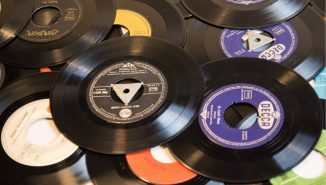
305 years ago today, Robinson Crusoe by Daniel Defoe was first published. Most people consider it the first novel in the English language, it is a fictional autobiography of a castaway who spent 28 years on a remote tropical island, encountering cannibals before ultimately being rescued. Often credited as the beginning of the realistic fiction genre, it became so popular that the book is second only to the bible in its number of translations. Robinson Crusoe was likely based on the life of Alexander Selkirk, a Scottish castaway who lived for years on a Pacific island near Chile, which in 1966 was renamed Robinson Crusoe Island. But, Daniel Defoe was more than a storyteller.
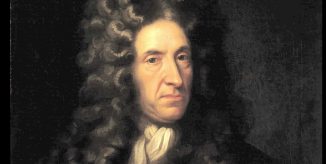
Defoe defiantly wrote many political tracts touting ideas that often got him into trouble with authorities—and landed him once in prison. One legend told of his serving a sentence in the public square locked in a pillory (the restraining stocks used for humiliation of prisoners). The public so loved him, especially for his satire, they threw flowers instead of rotten food, or worse. Defoe was a prolific and versatile writer, producing more than 300 works on diverse topics, including crime, religion, marriage, psychology, and the supernatural—he even pioneered business and economic journalism. He was also the author of Moll Flanders.(1719)
Also, 107 years ago today, the American jazz singer Ella Fitzgerald was born.
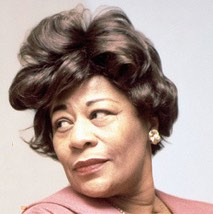
After tumultuous teenage years in Yonkers, NYC, Fitzgerald found stability in music, both in her gospel church and listening to jazz classics like Louis Armstrong. Known as “The First Lady of Song,” she is beloved for her purity of tone, impeccable diction, three-octave range, and trombone-like improvisational skill, particularly while scat singing. Her rendition of the nursery rhyme “A-Tisket, A-Tasket” helped boost her to national fame, and later collaborations with Armstrong (Dream a Little Dream of Me), The Ink Spots (Into Each Life Some Rain Must Fall), and Duke Ellington (It Don’t Mean a Thing If It Ain’t Got That Swing), were some of her most notable performances. Fitzgerald’s influence lives on through her albums, which won her thirteen Grammy Awards.
Fitzgerald was a quiet but ardent supporter of many charities and non-profits, and in 1993 established the Ella Fitzgerald Charitable Foundation to use the fruits of her success to help people of all races to find rewarding lives through the love of reading and music. She died in her Beverly Hills home in 1996 at the age of 79… Watch a live performance from 1974… (1917)
SHARE the Milestones, Memories and Music…


